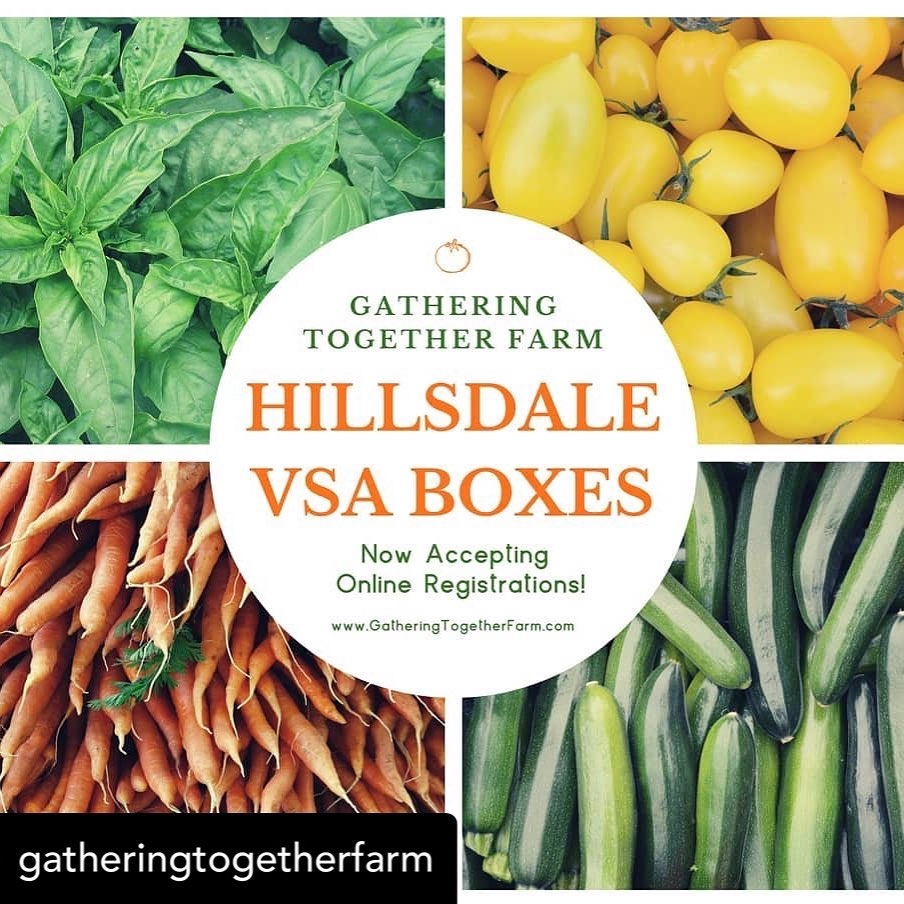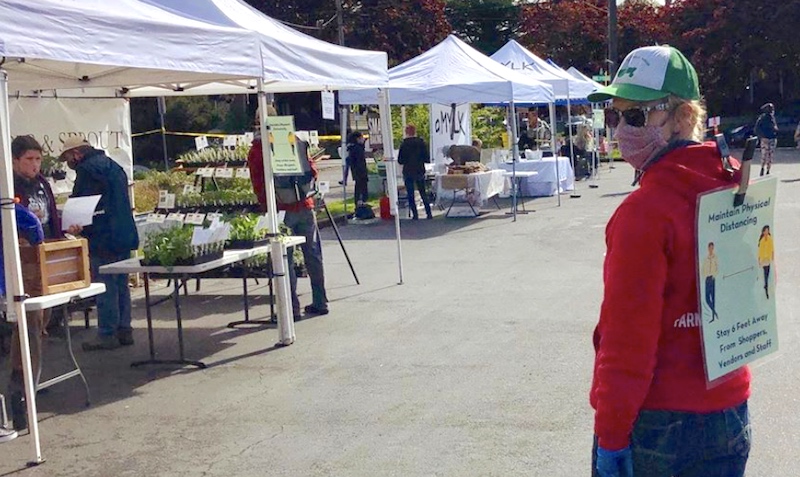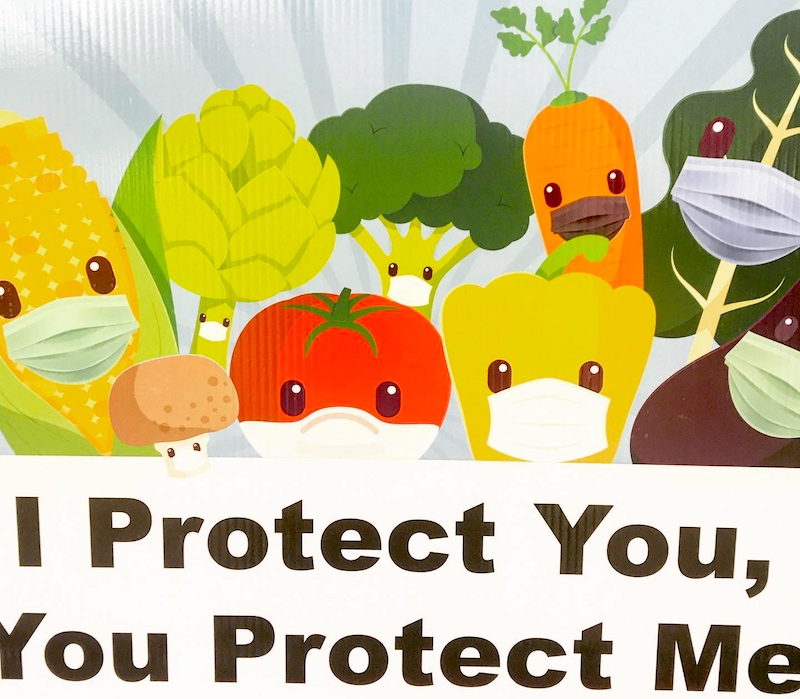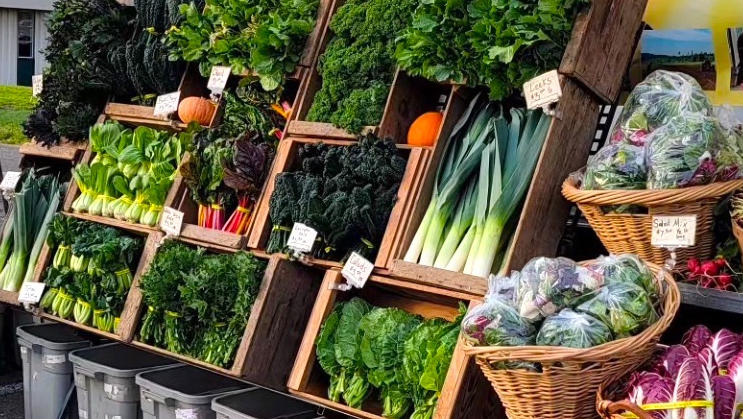
Farmers' Markets in Winter? You Bet!
In 2008, in an article for the Oregonian's FoodDay, I wrote, "I know the phrase 'winter farmers' markets' sounds like an oxymoron on the scale of 'open secret' or 'original copies,' but all you have to do is bundle up a bit, grab your market bag and you'll discover, like I did, a whole bunch of people who think this is actually fun, not to mention a way to eat fresher and more seasonally. Plus you can find great snacking on wonderful artisan cheeses and prepared foods, and warm drinks to keep the chill at bay."
When that article was written fifteen years ago, there were less than a handful of year-round farmers' markets in Oregon. Back then, mention of going to a winter farmers' market brought visions of sad, soupy bowls of boiled root vegetables. Even the Portland Farmers’ Market, the 800-pound gorilla of the state's farmers’ markets, took more than twenty years to finally get on the winter bandwagon in 2014.
My, how things have changed!
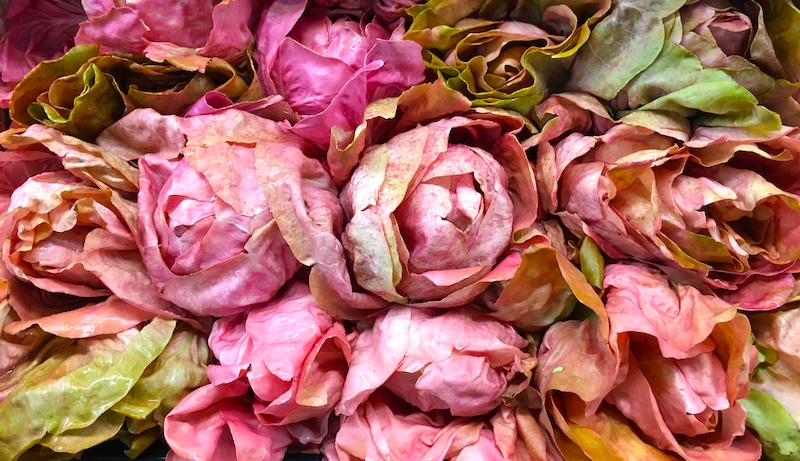
Demand for year-round access to local produce has grown to the point that in 2024 there are 26 markets statewide that are open during at least part of the winter, with 12 in the greater Portland metro area, including Vancouver and McMinnville (see list, below). This shift has meant local farmers and producers have been able to take advantage of year-round production and a more stable income.
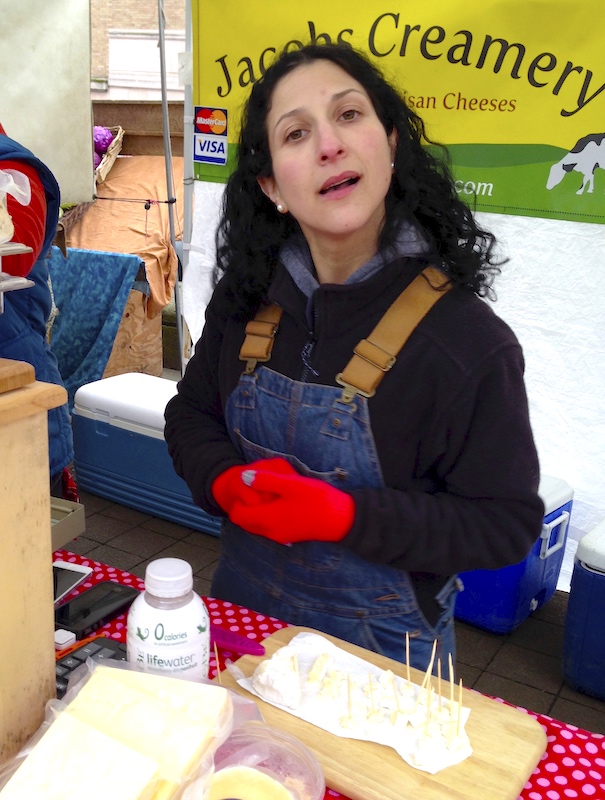
"The Winter Market is hugely important for vendors because it provides them with income for more than six months of the year," according to Ginger Rapport, Market Master at the Beaverton Farmers Market, which begins its winter season on February 3rd. "An extended season improves their cash flow over the course of the year and allows them to serve their customers for a greater number of months.
"Loyal customers would often drive great distances to vendors during our off months to pick up products that they just couldn’t go without while we were closed," she said. "The extended season gives customers easier access to the foods they love while helping vendors with much needed cash flow at the same time. It is a win-win for all!"
Plus farmers have the opportunity to retain key staff members, bringing continuity to the farm's operations while providing those staff members and their families with stable year-round employment.
And what will shoppers find at these markets?
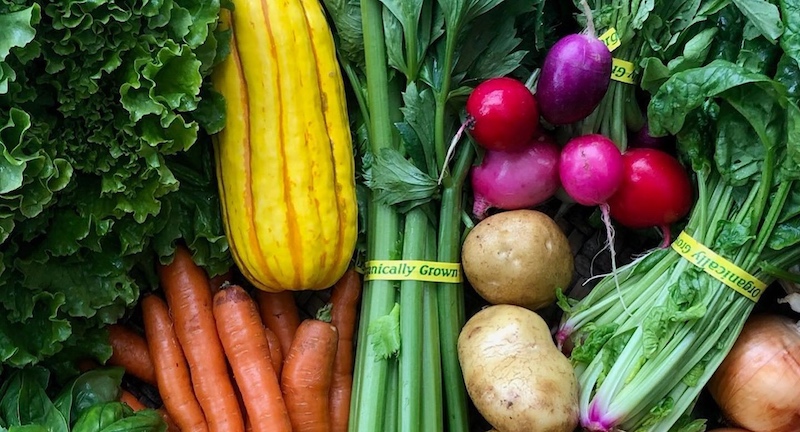
Simply walking down an aisle packed with happy shoppers filling their baskets, bags and wagons brings a profusion of color and aromas, from towers of sweet carrots and radishes—root vegetable and brassicas like kale are at their sweetest in winter when the plants pump out sugars to act as antifreeze— to squashes and heads of lettuce so vibrant you'd swear they have a pulse.
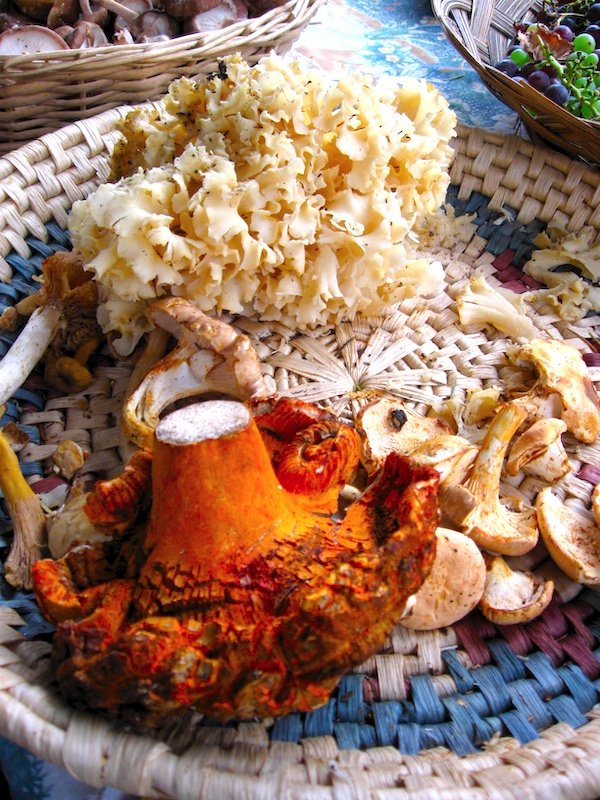
The maritime growing climate of the Willamette Valley is perfect for growing crops that do well in the cold all year long. So, in addition to year-round regulars such as fresh salad and braising greens, apples, cauliflower and broccoli, the winter markets starred things like fractalized chartreuse cones of romanesco and my choice for the ugliest, most delicious vegetable ever, celery root (aka celeriac). Plus root vegetables such as kohlrabi, beets in all colors of the rainbow, turnips, Jerusalem artichokes, parsnips and rutabagas. For omnivores of all stripes, there is sweet, start-of-the-season Dungeness crab and lots of lamb and beef available.
You'll find the latest "it" salad green isn't just green, but chicories—radicchio, the deep red softball-sized variety, being the best known of the species—come in colors from deep red treviso and tardivo to sunny yellow castelfranco with its splashes of rose to the peony-like pink Rosalba, and are being adapted by many Oregon farmers to thrive in our winters.
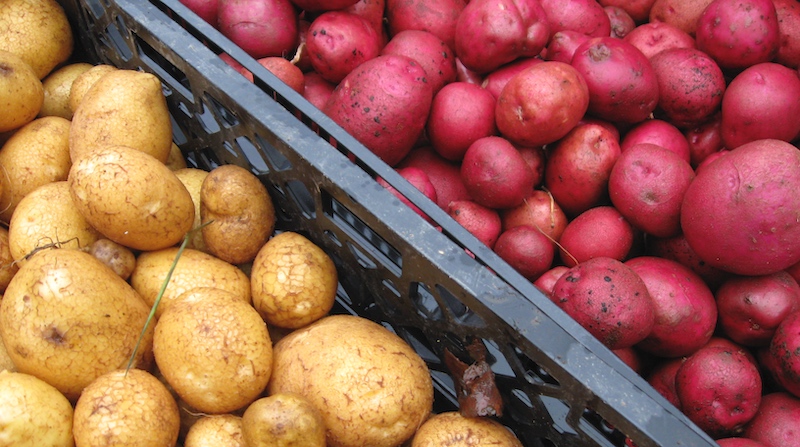
Regular market-goers also know that they can find their favorite Oregon hazelnuts and berry jams at the market, along with fish caught hours before in our oceans and rivers. Pasture-raised meats and cured sausages, fermented sauerkraut and pickles of all kinds, local cheeses from pastured cows and goats as well as vegan cheeses containing no milk at all line the aisles.
Listed below is the latest list of our winter markets with links to their websites. Let me know if I've missed one!
Portland Metro
Beaverton Farmers Market. Opens Feb. 3, 10 am-1:30 pm. 12375 SW 5th St, Beaverton.
Farmer's Market at the Grange. Sat., 10 am-2 pm. 1700 SW Old Sheridan Rd, McMinnville.
Hillsdale Farmers' Market. Alternating Sun., 9 am-1 pm. 1405 SW Vermont St., Portland
Hollywood Farmers Market. 1st and 3rd Sat., 9 am-1 pm. 4420 NE Hancock St, Portland.
Lake Oswego Reunion Farmers' Market. Single market Sat., Nov. 23. 9 am-1 pm. 200 1st St, Lake Oswego.
Montavilla Farmers Market. Sun., 10 am-2 pm. 7700 SE Stark St, Portland.
Oregon City Year-Round Farmers Market. Every other Sat., 10 am -2 pm. Clackamas Community College Green Lot #1, 19400 S. Beavercreek Rd, Oregon City.
People's Farmers' Market. Wed., 2-7 pm. 3029 SE 21st Ave, Portland.
PSU Farmers Market. Sat., 9 am-2 pm. SW Park and Montgomery, Portland.
Shemanski Park Harvest Market. Wed., Nov. 27, 10 am-2 pm. SW Main St & SW Salmon St, Portland
Woodstock Harvest Market. Sun., Nov. 24, 10 am-2 pm. 4600 SE Woodstock Blvd, Portland.
Vancouver Downtown Market. Sat., 10 am-2 pm. 17701 SE Mill Plain Blvd., Vancouver, WA.
Elsewhere in Oregon
Brookings Harbor Farmers Market. Wed. and Sat., 10 am-3 pm. 15786 US-101, Brookings.
Clatskanie Food Hub. Thurs.-Fri., 2-6 pm; Sat., 10 am-3 pm; Sun., 2-6 pm. 80 NE Art Steele St., Clatskanie.
Corvallis Indoor Farmers Market. Sat., 9 am-1 pm. 110 SW 53rd St, Corvallis.
Garden Valley Farmers Market. Sun., 11 am-3 pm. 4855 Garden Valley Rd, Roseburg.
Hood River Farmers Market. 1st and 3rd Sat., 10 am-Noon. 403 Portway Ave, Hood River.
Lane County Farmers Market. Opens Sat., Feb. 3, 9 am-3 pm. Farmers Market Pavilion at 8th and Oak.
Newport Farmers Market. Opens Sat., April 6, 9 am-1 pm. On the corner of Angle and Hwy 101, Newport.
North Coast Online Farmers Market. Shop online Sunday-Tuesday for Thursday pick-up at 1152 Marine Drive, Astoria.
Oakridge Community Farmers Market. 1st and 3rd Sat., Noon-2 pm. 48137 E 1st St, Oakridge.
Rogue Valley Indoor Winter Markets. Tues., 9 am-1 pm at Ashland National Guard Armory.v1420 E. Main St, Ashland; and Sun., 1-5 pm at Village at Medford Center (near Tinseltown and Tap and Vine), Medford.
Salem Holiday Market. Fri., Dec. 13, 5:30-8:30 pm; Sat., Dec. 14, 10 am-6 pm; Sun., Dec. 15, 10 am-4 pm. State Fairgrounds, Jackman Long Building, 2330 17th St NE, Salem.
South Valley Farmers Winter Market. Sat., Nov. 2 & 16 and Dec. 7 & 21, 10 am-4 pm. Cottage Grove Armory, 628 E Washington Ave, Cottage Grove.
Umpqua Valley Farmers' Market. Sat., 9 am-1 pm. First United Methodist Church Parking Lot, 1771 W Harvard Ave, Roseburg.
Waldport Christmas Vendor Faire. Sat., Dec. 14, 9 am-2 pm. restview Heights Elementary School gym, 2750 S Crestline, Waldport
Top photo: Recent Gathering Together Farm display from their Instagram feed.
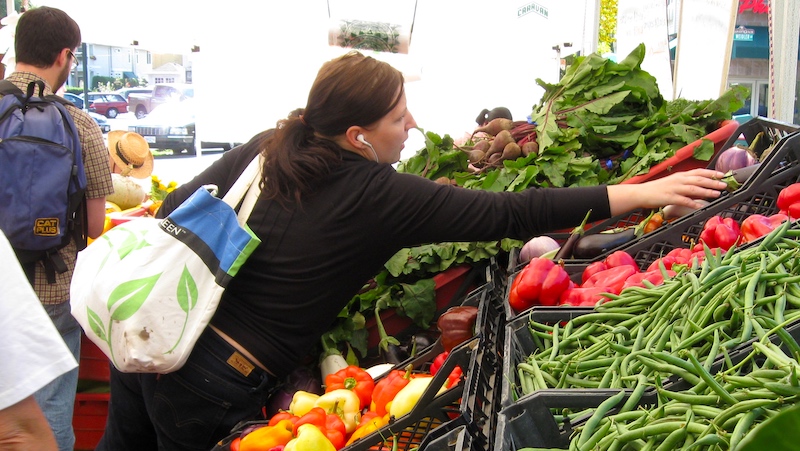
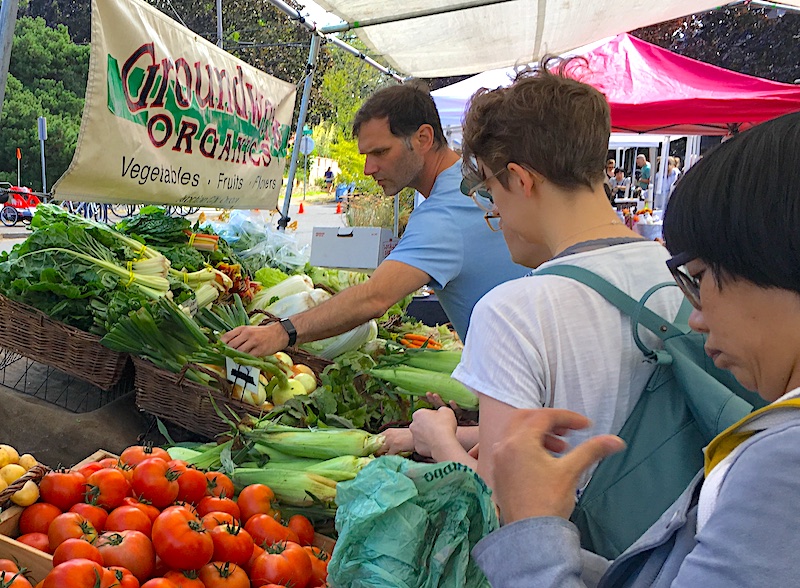 While the article primarily addresses how this lack of transparency affects institutional food procurement, the same problem exists in our supermarket aisles and on restaurant menus. Aside from the slippery definitions of words like "natural," "humanely raised" and "cage-free," the word "local" has achieved currency as a desirable label on food products.
While the article primarily addresses how this lack of transparency affects institutional food procurement, the same problem exists in our supermarket aisles and on restaurant menus. Aside from the slippery definitions of words like "natural," "humanely raised" and "cage-free," the word "local" has achieved currency as a desirable label on food products.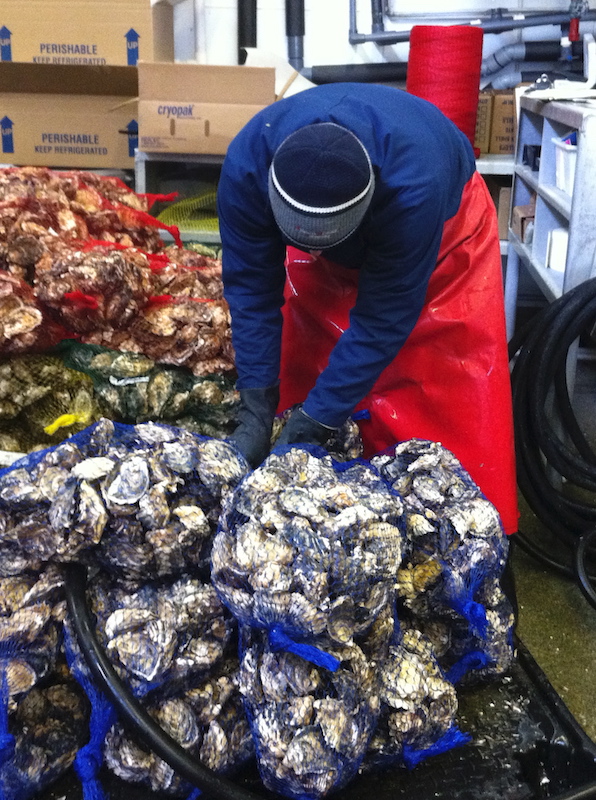 Want to add more local spirits to your home bar by buying from a local distiller? Check first that those products aren't made from bulk spirits imported from a factory far from Oregon. Many local distillers advertise their products as "locally produced" when they're actually importing bulk spirits that they only have to pump into barrels and blend or age here—it's worth asking if the producers truly distill their own alcohol.
Want to add more local spirits to your home bar by buying from a local distiller? Check first that those products aren't made from bulk spirits imported from a factory far from Oregon. Many local distillers advertise their products as "locally produced" when they're actually importing bulk spirits that they only have to pump into barrels and blend or age here—it's worth asking if the producers truly distill their own alcohol.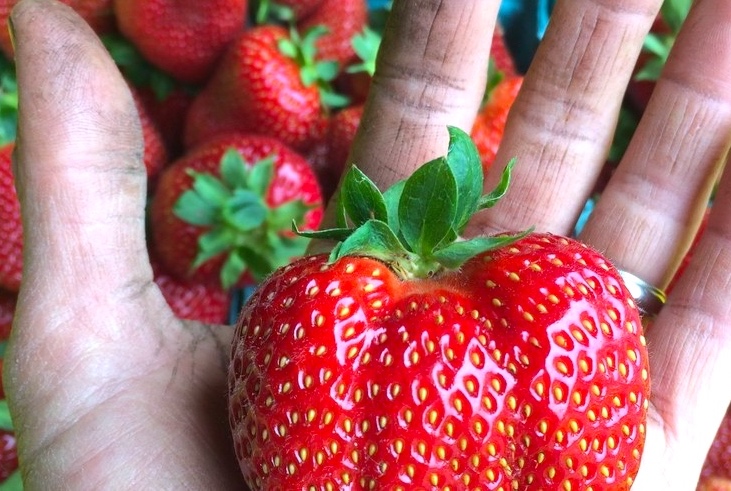 Rapport adds that while sourcing locally is encouraged, requiring vendors to buy from local sources can be problematic. "What if that farm runs out of what you need? What if the same item from two different farms, cabbage for sauerkraut for example, doesn’t taste the same and alters the final product you are making?" Plus, she notes, local products are likely more expensive than wholesale ingredients from a larger supplier.
Rapport adds that while sourcing locally is encouraged, requiring vendors to buy from local sources can be problematic. "What if that farm runs out of what you need? What if the same item from two different farms, cabbage for sauerkraut for example, doesn’t taste the same and alters the final product you are making?" Plus, she notes, local products are likely more expensive than wholesale ingredients from a larger supplier.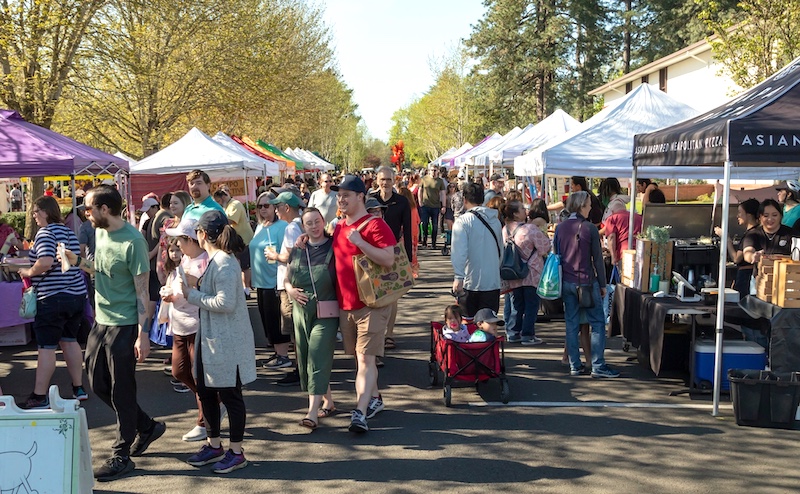
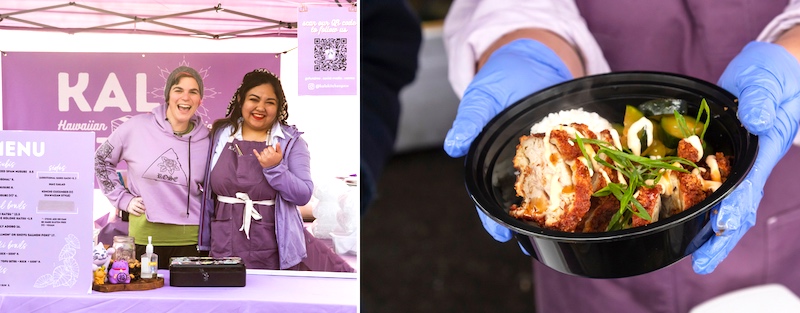
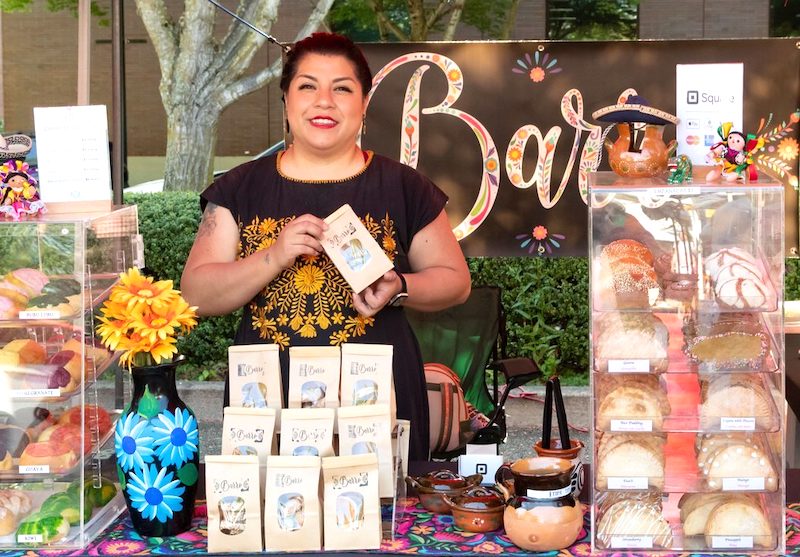
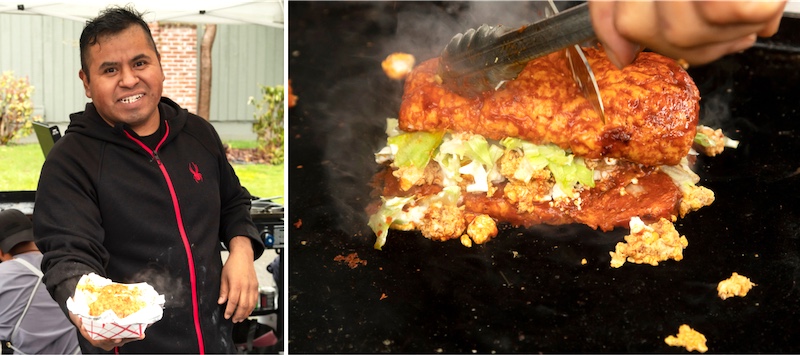
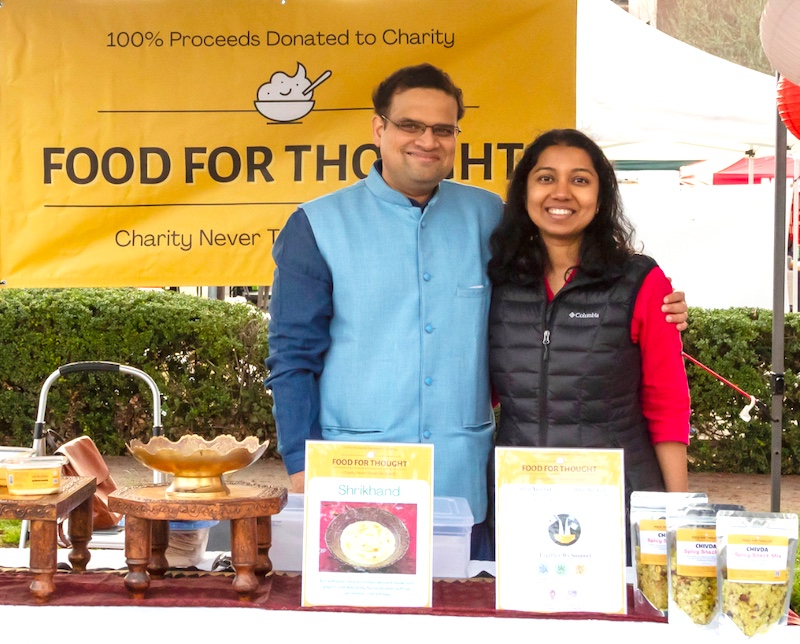
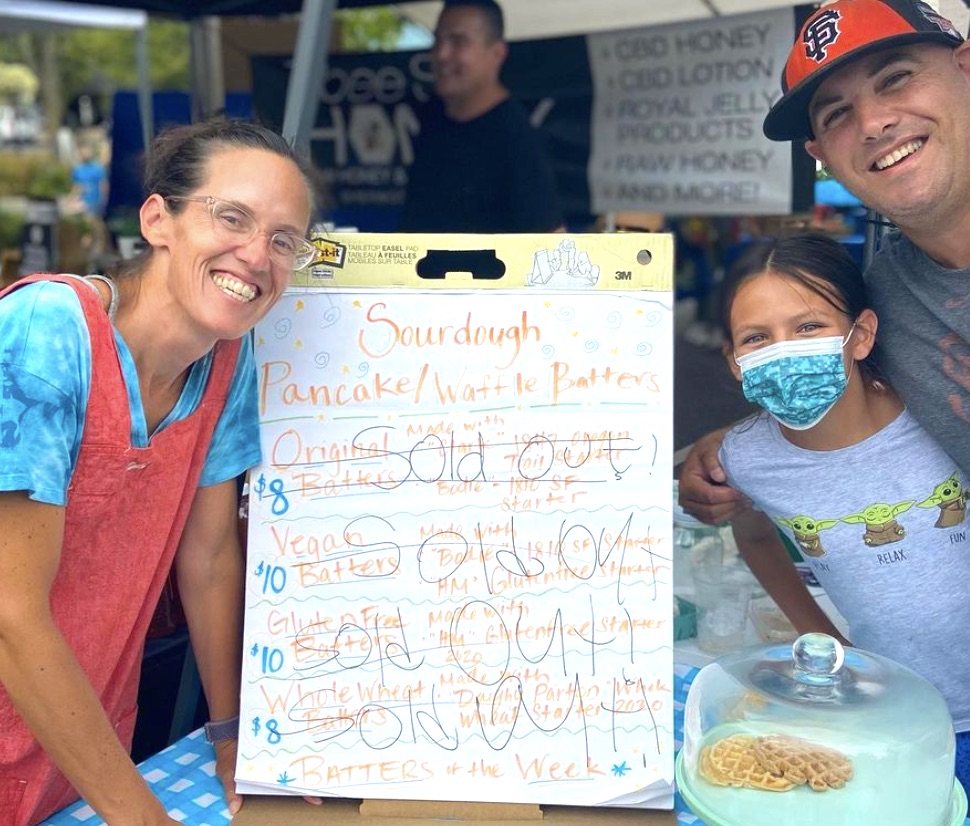

 There are many kinds of meals. There are those that simply feed you, those that feed your soul, and those that are so memorable that they rate right up there with the best experiences of your life. A meal at Joel Robuchon’s in Las Vegas MGM Grand Hotel is such an experience. Robuchon was named “Chef of the Century” by the Gault Millau in 1989 and had 32 Michelin stars, the most of any chef, at his time of death from pancreatic cancer in 2018.
There are many kinds of meals. There are those that simply feed you, those that feed your soul, and those that are so memorable that they rate right up there with the best experiences of your life. A meal at Joel Robuchon’s in Las Vegas MGM Grand Hotel is such an experience. Robuchon was named “Chef of the Century” by the Gault Millau in 1989 and had 32 Michelin stars, the most of any chef, at his time of death from pancreatic cancer in 2018.  So it is with great enthusiasm that Ginger embraces the hot new trend shepherded to fame by TikTok creator Justine Doiron: The Butter Board. Most of you are familiar with charcuterie boards—tasty combinations of meats and cheeses, along with complementary accompaniments such as fruits and nuts that make for great snacking and conversation when served among friends and family. Well, a Butter Board is a similar concept, only the main attraction is the excellent quality butter that has been creatively enhanced and surrounded by pieces of bread and crackers.
So it is with great enthusiasm that Ginger embraces the hot new trend shepherded to fame by TikTok creator Justine Doiron: The Butter Board. Most of you are familiar with charcuterie boards—tasty combinations of meats and cheeses, along with complementary accompaniments such as fruits and nuts that make for great snacking and conversation when served among friends and family. Well, a Butter Board is a similar concept, only the main attraction is the excellent quality butter that has been creatively enhanced and surrounded by pieces of bread and crackers.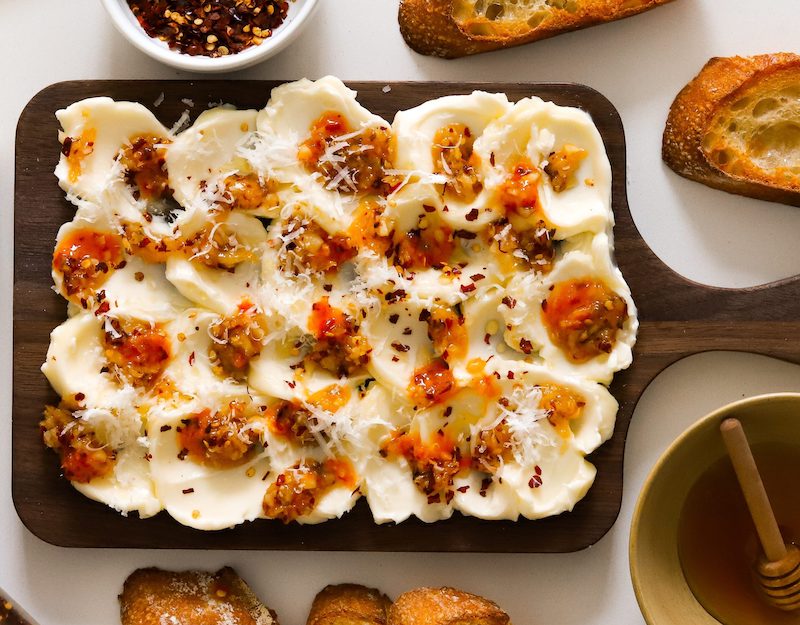 The thing that is so wonderful about this idea is that it is relatively simple to prepare, and you can get as creative as you want with the combinations of ingredients. First, you start with fabulous butter. Do not skimp here! Here at the Beaverton Farmers Market, we are lucky to have the gorgeous butter made by our friends at
The thing that is so wonderful about this idea is that it is relatively simple to prepare, and you can get as creative as you want with the combinations of ingredients. First, you start with fabulous butter. Do not skimp here! Here at the Beaverton Farmers Market, we are lucky to have the gorgeous butter made by our friends at 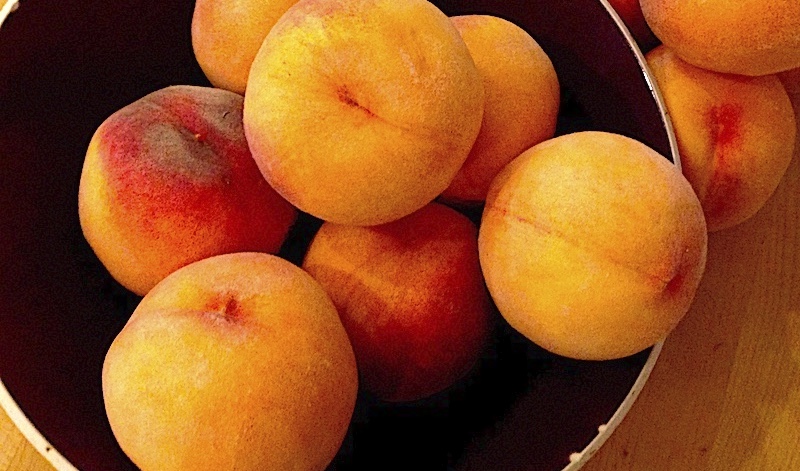
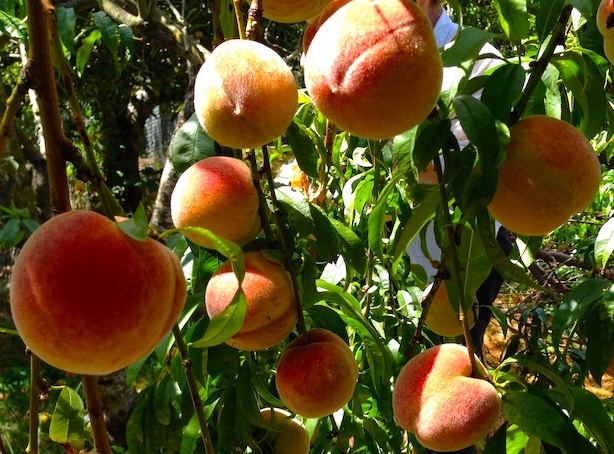 Among its many attributes, a medium peach is a mere 37 calories and is high in vitamins A, B, and C. Because a fully ripe peach is delicate and easily bruised, you will often find them sold just “under-ripe.” To fully ripen your fruit, place them on the counter in a brown paper sack, folded closed, for two or three days. (Do not try this in a plastic bag. As the fruit respires, it gives off moisture which will collect on the plastic bag and cause the fruit to rot.) The ripe fruit will be soft and fragrant. Refrigerate them at this point.
Among its many attributes, a medium peach is a mere 37 calories and is high in vitamins A, B, and C. Because a fully ripe peach is delicate and easily bruised, you will often find them sold just “under-ripe.” To fully ripen your fruit, place them on the counter in a brown paper sack, folded closed, for two or three days. (Do not try this in a plastic bag. As the fruit respires, it gives off moisture which will collect on the plastic bag and cause the fruit to rot.) The ripe fruit will be soft and fragrant. Refrigerate them at this point. 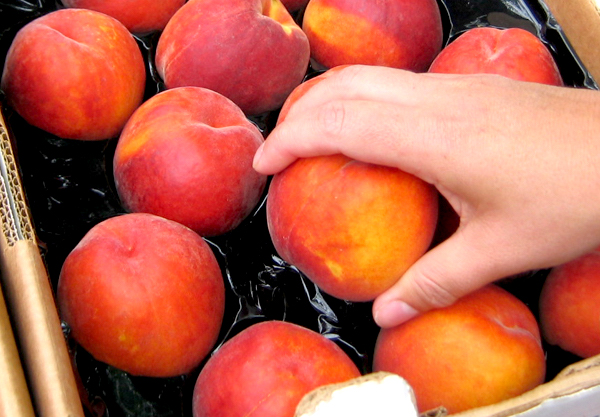 Like the plum and the apricot, peaches are members of the rose family (Rosaceae), distinguished by their velvety skin. If the peach fuzz bothers you, try rubbing the fruit with a terry handtowel after washing, it will diminish the feel of the fuzz on your mouth. Of course, you could also choose to purchase nectarines instead if the fuzzy skin bothers you.
Like the plum and the apricot, peaches are members of the rose family (Rosaceae), distinguished by their velvety skin. If the peach fuzz bothers you, try rubbing the fruit with a terry handtowel after washing, it will diminish the feel of the fuzz on your mouth. Of course, you could also choose to purchase nectarines instead if the fuzzy skin bothers you. 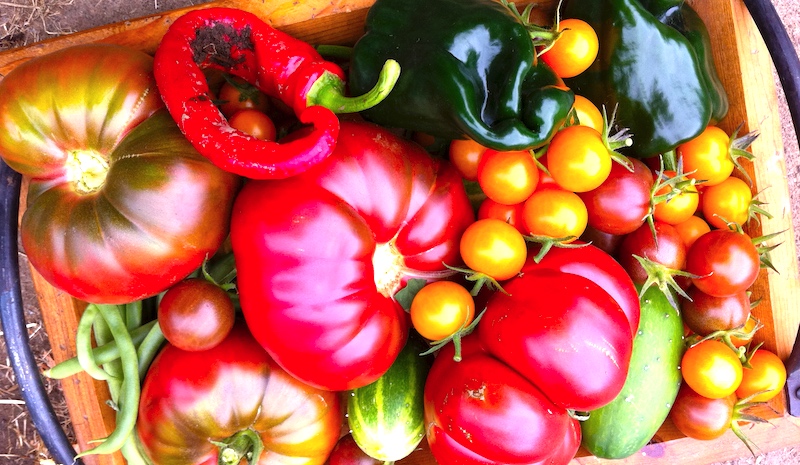

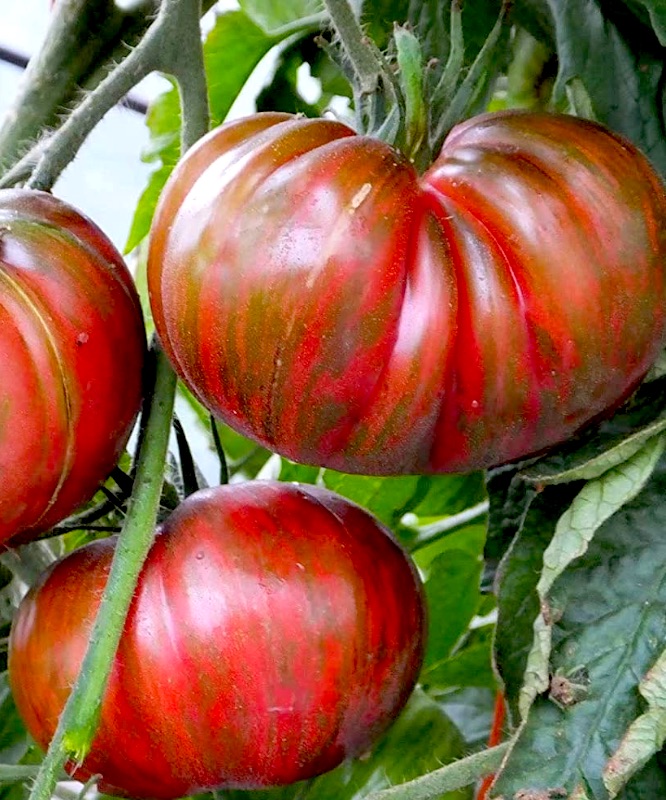
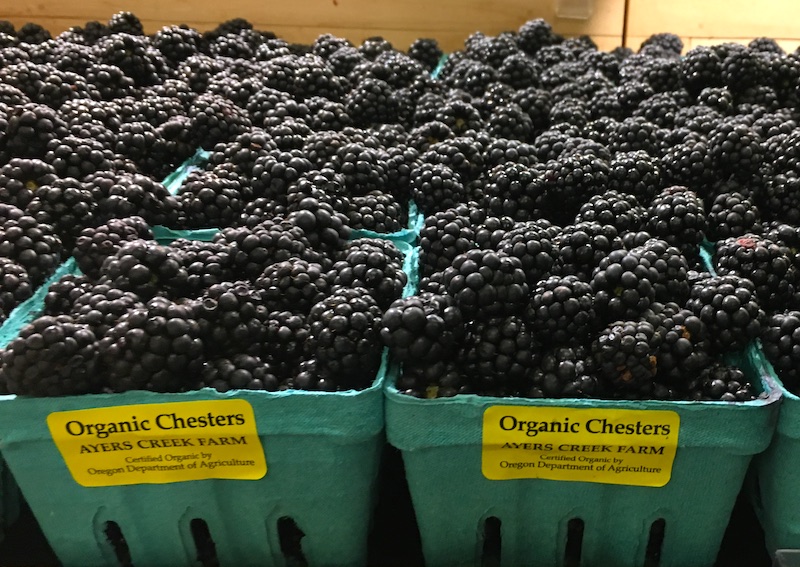
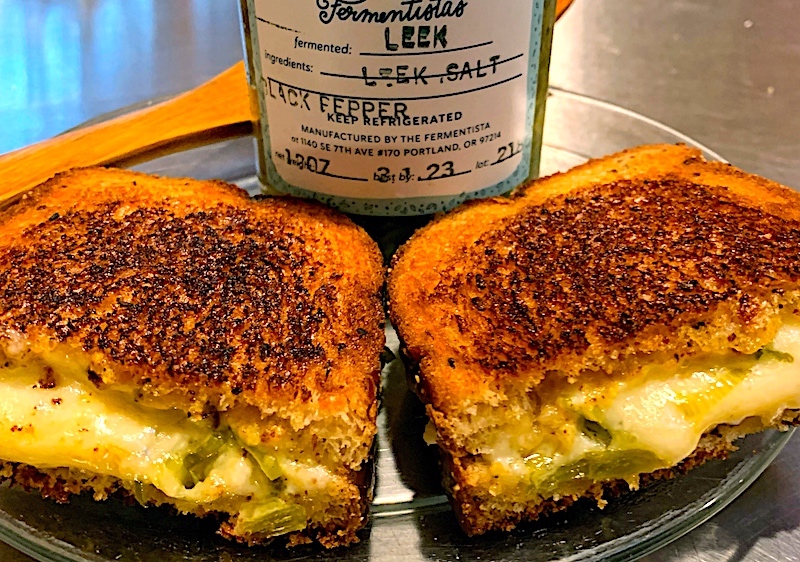
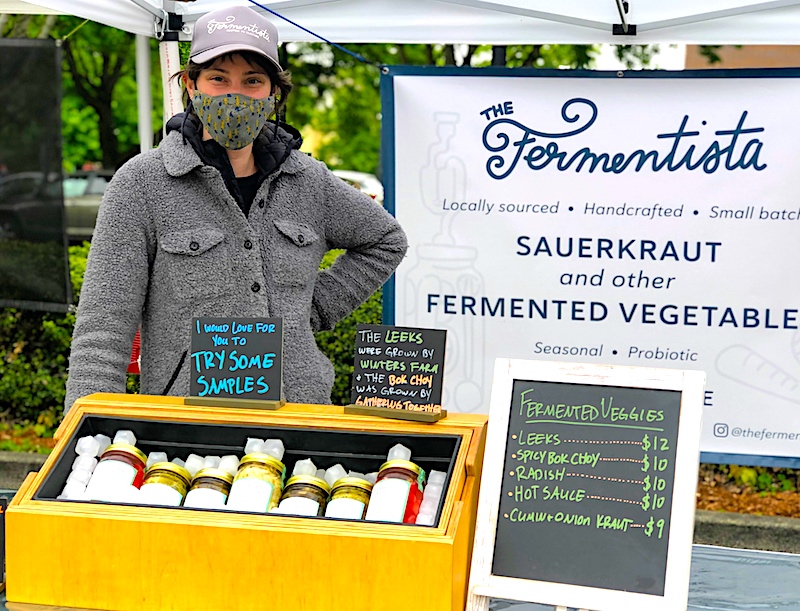
 Sarah specializes in fermented vegetables from sauerkraut to salsa. Fermenting gives food a sour flavor without any added acid, which differs from pickling, which involves putting food into an acidic brine. Fermenting is a healthier and, in our opinion, tastier way to preserve vegetables such as cabbage. Sarah makes several delicious krauts so we asked for her recommendation. Market Master Ginger Rapport was leaning toward her Caraway Sauerkraut because she loves the hint of onion that Sarah adds to the mix. However she changed her mind at Sarah’s urging and instead picked up a jar of Fermented Leeks with Black Pepper.
Sarah specializes in fermented vegetables from sauerkraut to salsa. Fermenting gives food a sour flavor without any added acid, which differs from pickling, which involves putting food into an acidic brine. Fermenting is a healthier and, in our opinion, tastier way to preserve vegetables such as cabbage. Sarah makes several delicious krauts so we asked for her recommendation. Market Master Ginger Rapport was leaning toward her Caraway Sauerkraut because she loves the hint of onion that Sarah adds to the mix. However she changed her mind at Sarah’s urging and instead picked up a jar of Fermented Leeks with Black Pepper.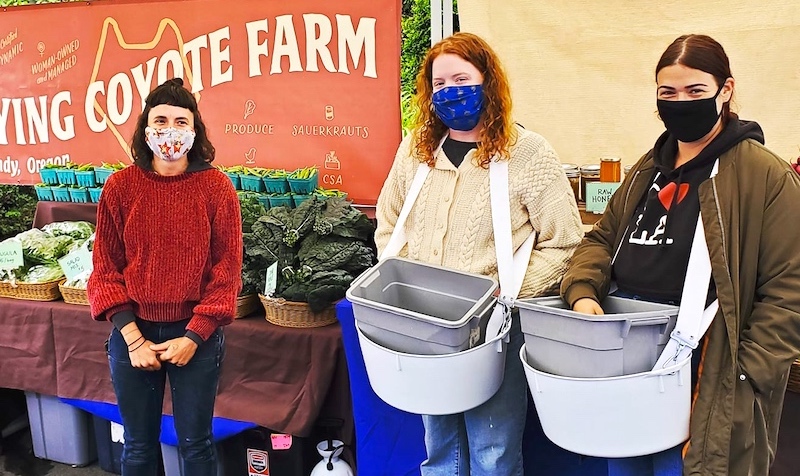
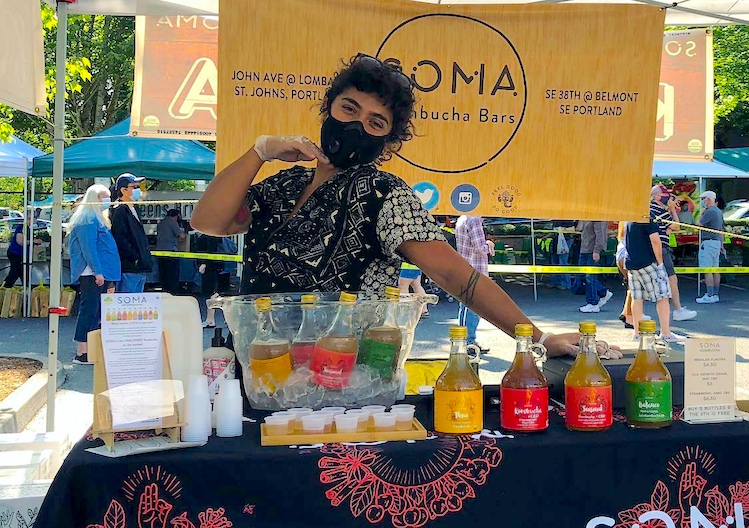 "We have confirmation today from Oregon Department of Agriculture (ODA) that markets and other businesses should not be making changes before getting new guidance from Oregon Health Authority [OHA]," a
"We have confirmation today from Oregon Department of Agriculture (ODA) that markets and other businesses should not be making changes before getting new guidance from Oregon Health Authority [OHA]," a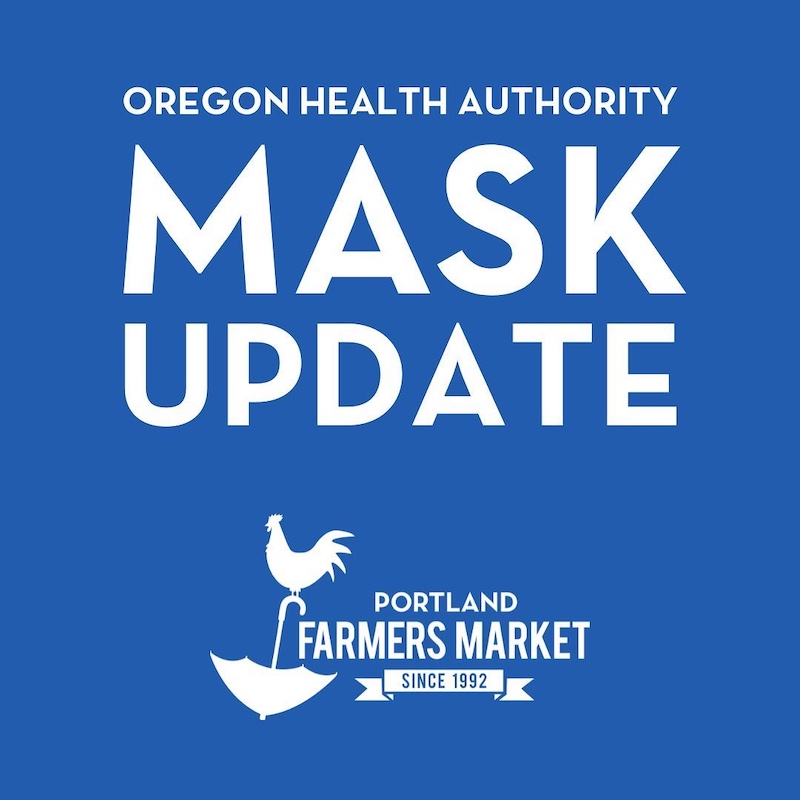 "On May 18, OHA released updated guidance about mask and physical distancing requirements for individuals fully vaccinated against COVID-19.
"On May 18, OHA released updated guidance about mask and physical distancing requirements for individuals fully vaccinated against COVID-19.
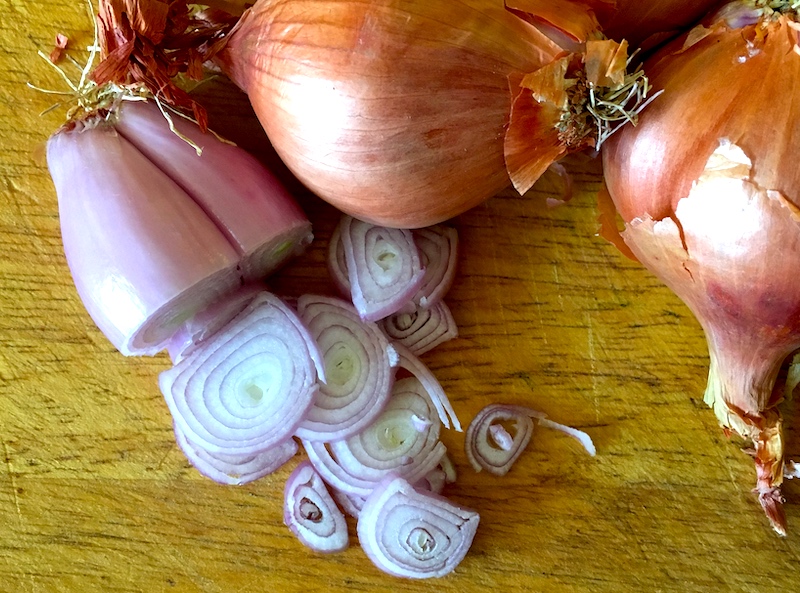 Shallots have a delicate, sweet flavor without the intense heat of an onion. They are preferable over onions in raw applications such as salad dressings and vinaigrettes. Finely diced, they provide a subtle bite to pan sauces and are delicious roasted whole, or pickled as a garnish. Shallots are ubiquitous in Vietnamese cooking, especially pho, where they are combined with ginger to give pho its unique taste and fragrance.
Shallots have a delicate, sweet flavor without the intense heat of an onion. They are preferable over onions in raw applications such as salad dressings and vinaigrettes. Finely diced, they provide a subtle bite to pan sauces and are delicious roasted whole, or pickled as a garnish. Shallots are ubiquitous in Vietnamese cooking, especially pho, where they are combined with ginger to give pho its unique taste and fragrance. 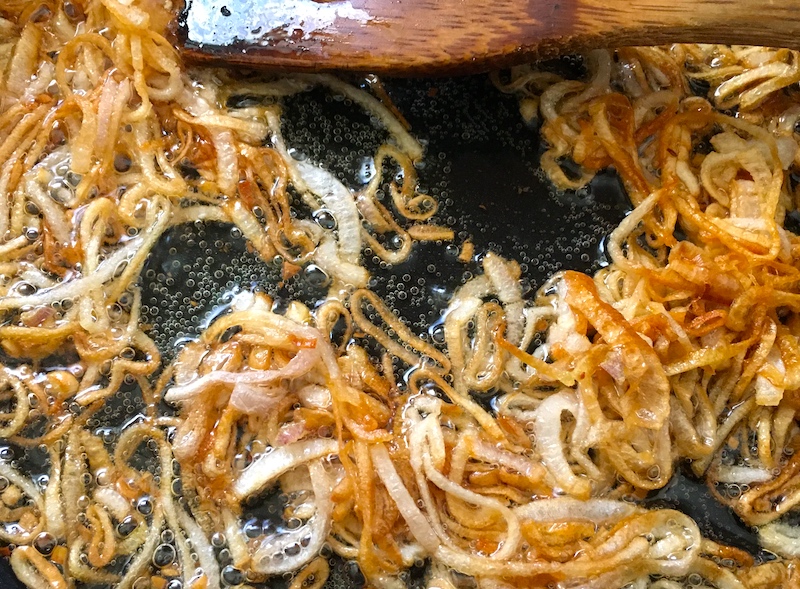 Frying shallots turns them into crispy, flavor-packed clusters that are good on almost anything. (This is not an exaggeration.) Beaverton Farmers Market Master Ginger Rapport keeps a container of them in her refrigerator at all times. Their caramelized flavor and crunchy texture adds sparkle to salads, potatoes, roasted or steamed vegetables, grain bowls, omelets, steaks, deviled eggs and avocado toast. Chopped, they can be added to dips or combined with mayonnaise as a sandwich spread. Bring cottage cheese to life with a sprinkling of fried shallots on top.
Frying shallots turns them into crispy, flavor-packed clusters that are good on almost anything. (This is not an exaggeration.) Beaverton Farmers Market Master Ginger Rapport keeps a container of them in her refrigerator at all times. Their caramelized flavor and crunchy texture adds sparkle to salads, potatoes, roasted or steamed vegetables, grain bowls, omelets, steaks, deviled eggs and avocado toast. Chopped, they can be added to dips or combined with mayonnaise as a sandwich spread. Bring cottage cheese to life with a sprinkling of fried shallots on top. 